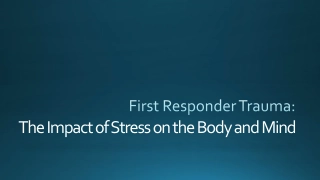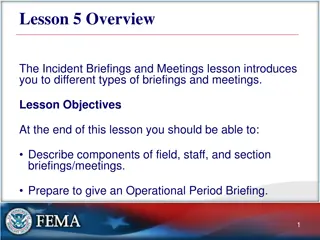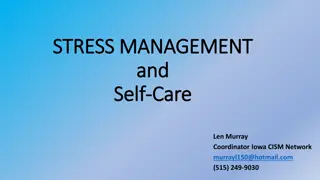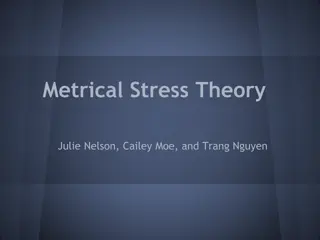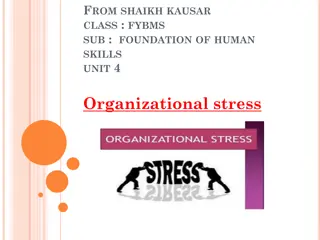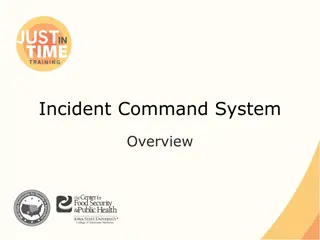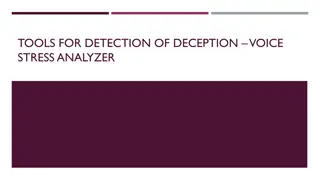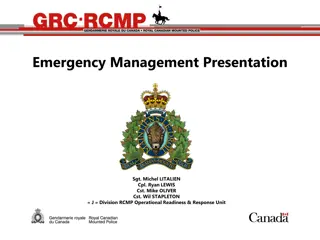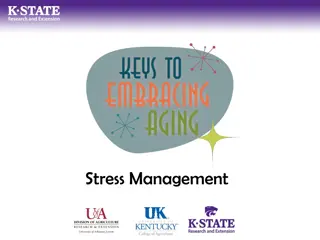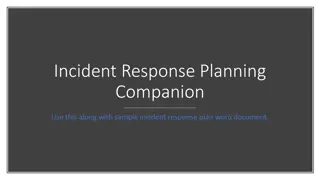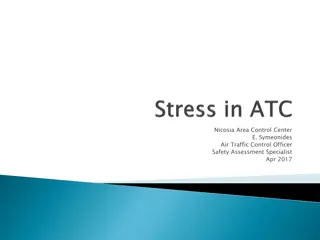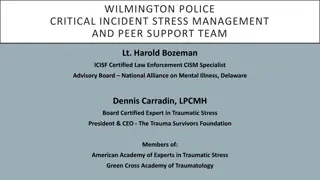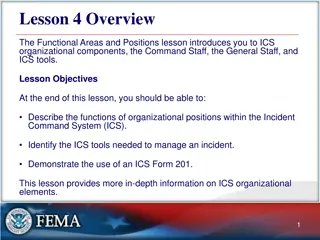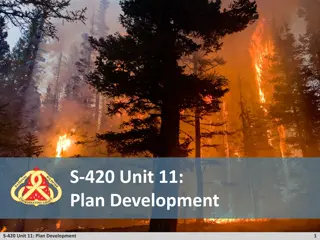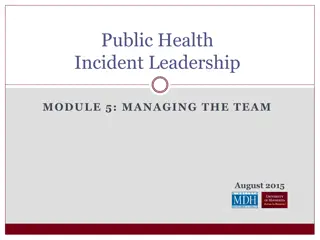An In-Depth Guide to Operational Debriefing and Critical Incident Stress Debriefing
Dive into the world of operational debriefing and critical incident stress debriefing, exploring their principles, benefits at individual, team, and organizational levels, and techniques like CISD. Discover how these approaches facilitate learning, improve service delivery, and reduce psychological after-effects. Explore stages like preparation, setting the scene, discussion, and closing, with a focus on understanding incidents and generating new ideas for personal and organizational growth.
Download Presentation

Please find below an Image/Link to download the presentation.
The content on the website is provided AS IS for your information and personal use only. It may not be sold, licensed, or shared on other websites without obtaining consent from the author. Download presentation by click this link. If you encounter any issues during the download, it is possible that the publisher has removed the file from their server.
E N D
Presentation Transcript
Experience: that most brutal of teachers. But you learn, boy do you learn. A Guide to Operational Debriefing
To explain the principles of debriefing To introduce you to the Met s approach to operational debriefing To enable you to identify if the approach could apply in your organisation.
Individual level Cathartic Provides individuals with a chance to have their say Provides an opportunity to learn from others Team level Listen to each others points of view Understand the reasoning for actions/behaviour Promotes collective learning Organisational level Improved service delivery Improved performance Improved service to families/communities
Operational Psychological Operational not welfare perspective Critical Incident Stress Debriefing (CISD) Any incident (not necessarily traumatic) Traumatic events, often with significant loss of life Aims for practical change and future improvement Aims to reduce psychological after- effects
Unusual or new approach was needed in an incident/operation High profile and/or sensitive incident Range of external stakeholders/ partners involved Particularly successful or problematic
Relatively quick on average 1 hours Common sense method No specific equipment Flexible and scalable Method focusses on learning & generating new ideas for personal & organisational development Non attributable feedback
Sponsor De-briefer(s) Participants Note Taker(s)
3 Stages: Preparation for the de-brief 1. The de-brief I. Setting the Scene II. Sharing and discussion III. Closing 2. Report writing and sign off 3.
To establish an understanding of the incident To identify the key issues relating to the incident To agree the logistics of the debrief: Date and times Venue Participants
Your role Not here as a police officer Here to facilitate and gather information Aims and objectives of the session Length of session Ground-rules Open environment for honest exchange Not about rank or band or seniority. Everyone s view is valid Not about blame-seeking Non-attributable Focus on learning and identifying improvements Explanation of process Explanation of what will happen with the information Any questions or concerns
Poster size Bespoke Key issues related to the incident Not restrictive/exhaustive Participants do not need to comment on all issues Enables participants to see the main clusters and patterns
Support and welfare Team working Decision making Information and document management Communication, press and media Staffing and resources Work/life balance Risk Security and vetting Costs, budgets and finance Legal advice and support assessment and management Terms of reference Physical and organisational location of team Relationships with external Inquiry Internal and external partnerships
Team working Witnesses Links with previous incidents Decision making CCTV Leadership and management Video identification Legal issues Roles and responsibilities Community, cultural or diversity issues Forensics Welfare and well-being Intelligence Family liaison Resources, equipment and logs Staffing and workload Press and media Communication and information sharing Relationships with borough HOLMES/MIR
Poster size Bespoke Key issues related to the incident Not restrictive/exhaustive Participants do not need to comment on all issues Enables participants to see the main clusters and patterns
Identification of less effective aspects x 3 What did not work so well? What were you unhappy with? What problems did you experience? - - - Identification of effective aspects x 3 What worked really well? What examples of good practice can you identify? What were you particularly pleased with? - - -
Manage the discussion by: Ensuring everyone has a chance to speak Not letting strong characters dominate the session Keeping the discussion flowing by bringing in other participants Does anyone else have a similar point? Asking probing questions: To gather more in-depth information/get under the surface Use Who , What , Why , How , Where , When questions. Who made that decision? What was the impact (on the family/the team/the borough/on progress)? Why were you asked to re-interview the witness? How many members of the team were involved? Where did you get that information? When did that happen?
Key final question Identification of improvements for the future x 3 - What would you do differently next time? - What ideas do you have for improvements? Summarise and Next Steps Thanks
Reduces group influences Reduces affect of hierarchy/seniority Everyone has a chance to have their say Visually see clusters of effective and less effective areas Build from less effective to effective Quantifiable
Report Structure Incident summary Debrief details Effective aspects Less effective aspects Recommendations for change Writing up the information Quantify each point based on the number of times the issue was raised on the post-it note and show in brackets after each point. e.g. The team established a very good working relationship with Counsel who was responsive to the needs of the team, helpful and friendly (4) Diplomacy and tact but without losing meaning
Recommendations should explain how identified improvements can be made Recommendations should be evidence based. In this case, based on information collected during the debrief Recommendations must be: Specific, clear and direct NOT We need to improve training for Senior Investigators INSTEAD Unit X to introduce media training by (date), particularly on appeals, updates and following court judgements. This will increase the confidence of Senior Investigators when they have to deal with the press and media and improve the effectiveness of the messages they are trying to deliver. Recommendations should answer these questions: What needs to be done? Why does it need to be done? How is it to be done and by whom? When does it need to be done?
Consider sending to participants to confirm details of their recommendations, but not to add new information Send on to Sponsor for final sign off and agreement to how it is progressed Where relevant, send a copy to stakeholders




